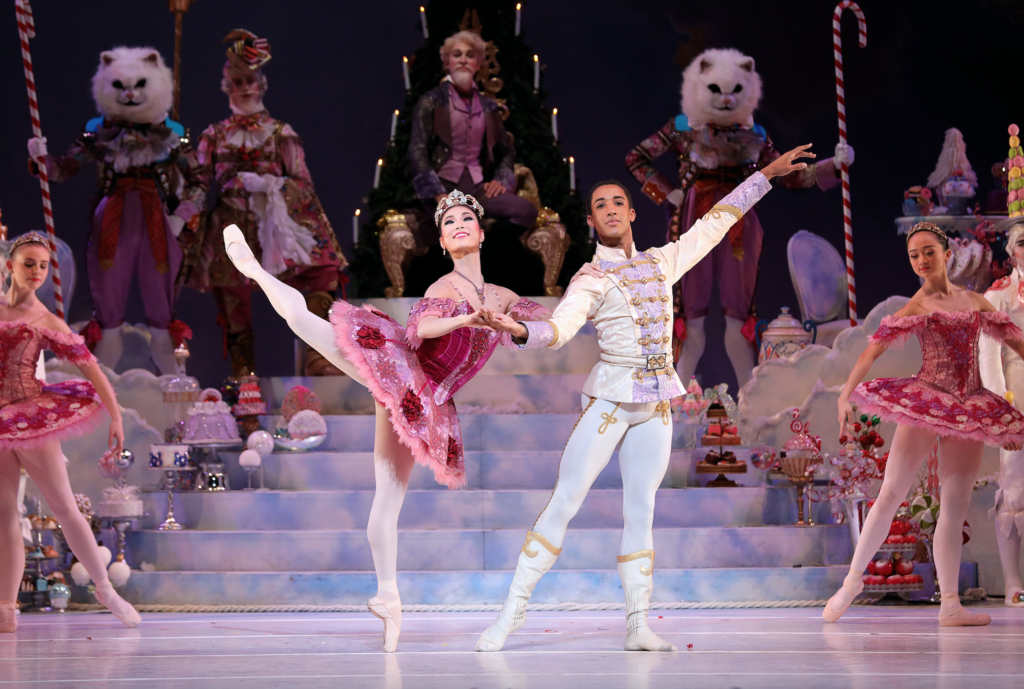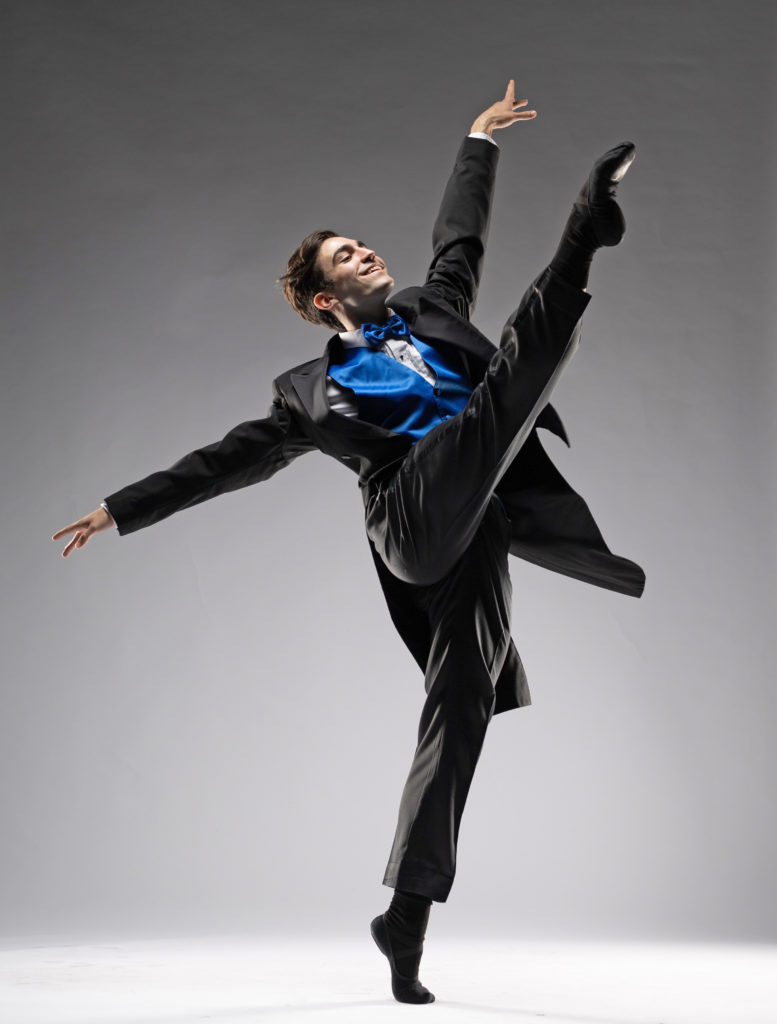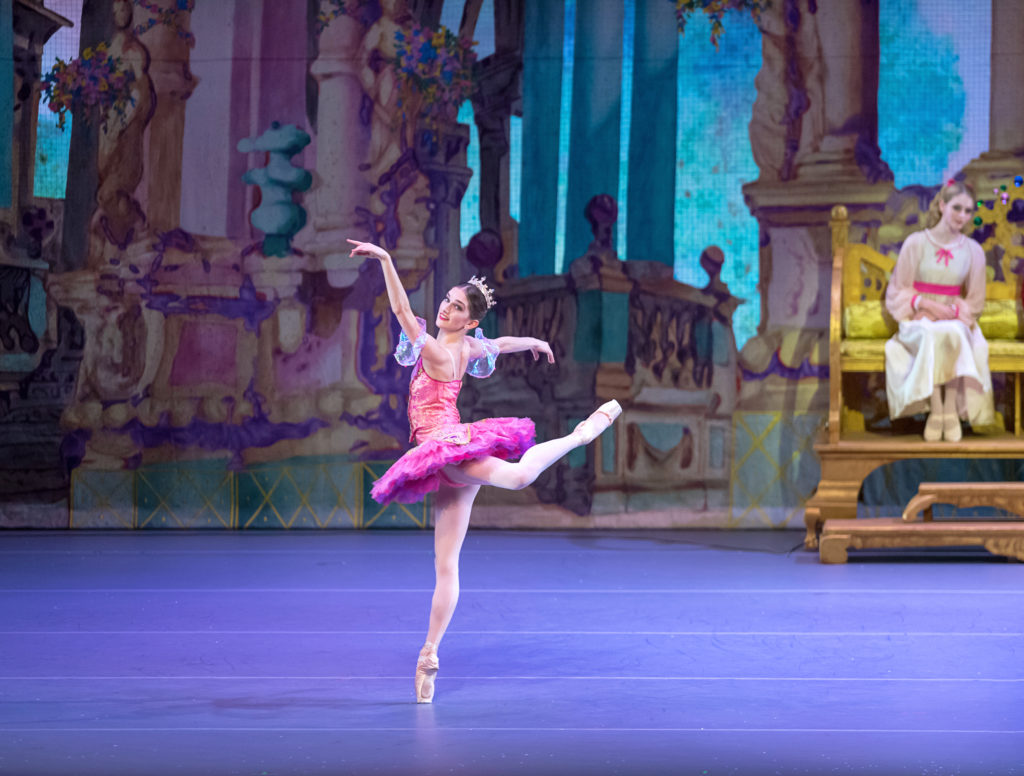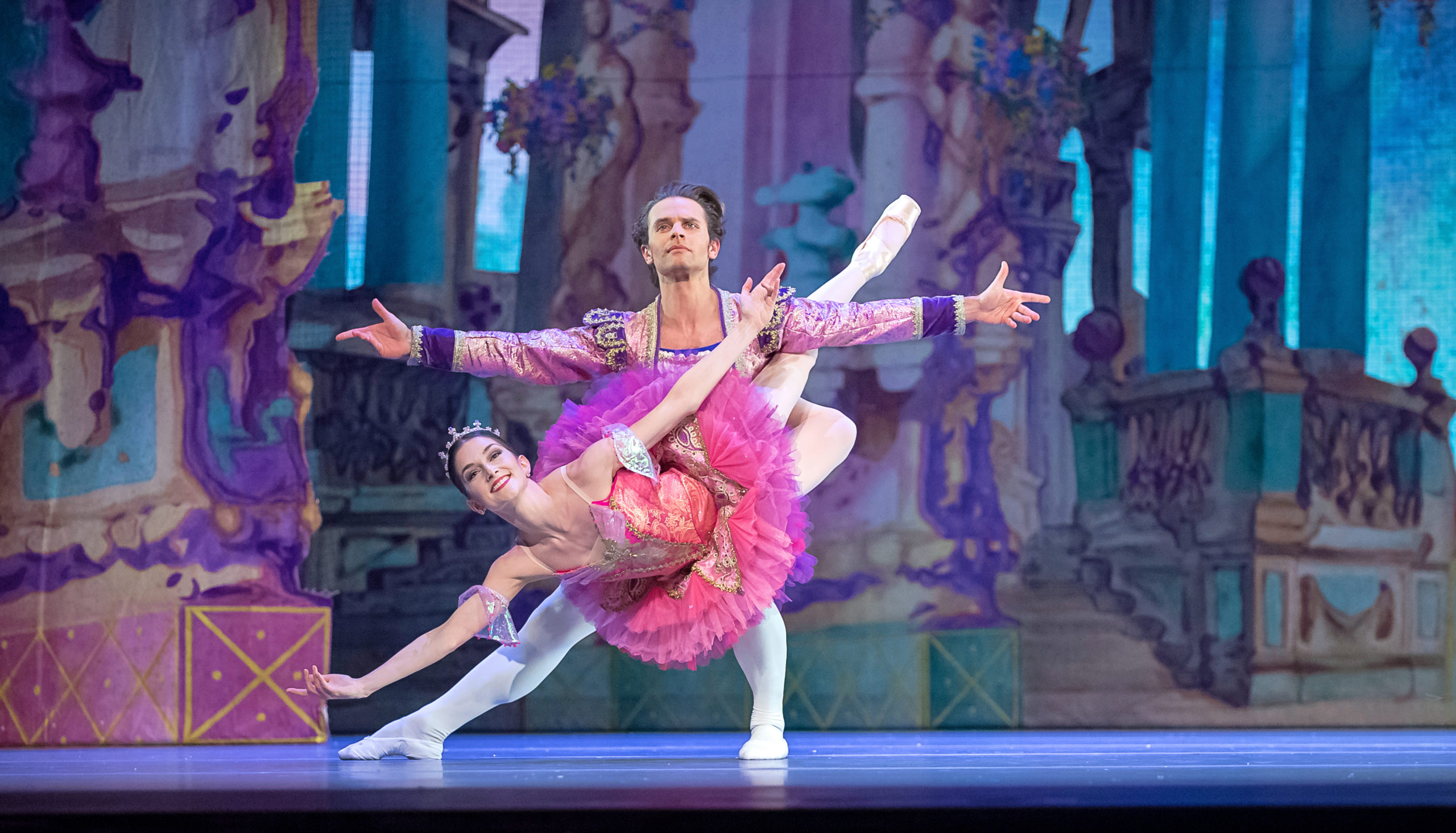My Big “Nutcracker” Break: 3 Pros Share Memories and Advice for Taking on Lead Roles
Updated on 11/28/23
For ballet dancers, Nutcracker season is a time of new artistic and technical heights. And thanks to the sheer number of performances, it can also be a time when many dancers get their first soloist or principal role. But getting a big break during the pinnacle of performing season can be both intimidating and exciting, a time of challenges, growth, and experiences which will resonate throughout the rest of the season and beyond.
Be Prepared, Stay in the Moment
In 2017, Houston Ballet’s Harper Watters checked the Nutcracker cast list and saw that he would be performing as the Prince. Watters says he “had an inkling” that he might be cast in the role since he had understudied it the year before, but he was nervous about the technical aspect of the it. “It’s a benchmark role for classical ballet, but, at that point, I never really thought of myself as a ‘prince,’” he remembers. He felt more at home in neoclassical ballets by Balanchine, Forsythe and Kylián, where he felt free to play with musicality.

For Watters, calming nerves before his debut meant taking class every day and rehearsing his role as much as possible. “What makes me nervous is doing a role I don’t feel prepared for,” he says. “When it comes to the performance, my advice would be to try to stay in moment and take it step by step. My dance partner and I would whisper ‘Be calm’ to each other.” Watters advises dancers to “put intention behind every movement” while, at the same time, accepting the variables of live performance and all that makes it special. “Any time onstage is a time of growth, even if you feel like you’re just getting through.” He also advises dancers not to neglect basics of self-care, such as hydrating and getting enough sleep.
Trust Your Partners, Teachers and Body
Though Jaysan Stinnett of Orlando Ballet had been called to learn Cavalier during Nutcracker season in 2020, he was surprised to be cast in the role this season. Stinnett learned Cavalier as a student, but this will be his first time performing the role as a professional. “It’s interesting to see how the role has evolved technically and artistically over the years,” he says. At first, he felt a little intimidated to work with veteran company dancer Kate-Lynn Robichaux. “We were new to partnering each other,” he explains. “But I learned to talk with her about different aspects of our dance and what was working and what wasn’t.”

Through the experience of practicing the role this year, he also learned to pace his energy in class and rehearsal. “I learned to trust my body when it was tired and at the beginning of rehearsal,” he says. “I realized that I don’t have to put 100 percent energy into everything. My advice to young dancers getting their first big break would be to trust your teachers, trust your coaches and trust your body.”
Every Role is an Opportunity to Shine
As a member of the corps with Ballet Idaho, Elizabeth Barreto had performed Nutcracker’s Spanish dance, marzipan corps and lead, ballerina doll, flower corps, and snow scene before getting her first big break in 2015. At the time, she was understudying Sugarplum. “I stood in the back and didn’t have a partner because there were already three or four casts rehearsing it,” she says.

One day, principal dancer Andrew Taft, who was cast as the Cavalier, asked then artistic director Peter Anastos if Barreto could dance as Sugarplum with him for one performance. The dancers had performed the pas de deux together before on guesting gigs. Anastos agreed and gave them a school show. Barreto says that it helped that she and Taft were already used to dancing with each other. “I also felt I had nothing to lose. It was just one show and I was so excited to be performing the role. Sometimes I wish I could have the fearlessness I had when I was younger,” she remembers.
That one show led to a bigger break: Within the same season, Barreto was cast as the lead in Balanchine’s Valse Fantaisie and then promoted from corps to principal in 2016. (She recently retired from the company in May.) But she thinks dancers should take special care with their work no matter what part they’re performing. “When I was in the corps, I never considered any role ‘small,’” she says. “Corps roles often get treated as a chore or simply a stamina builder, but I chose never to see it that way. That helped prepare me to eventually handle the more prominent roles. Treat every rehearsal and performance as an opportunity to get better, to refine technique and, especially, to shine.”





